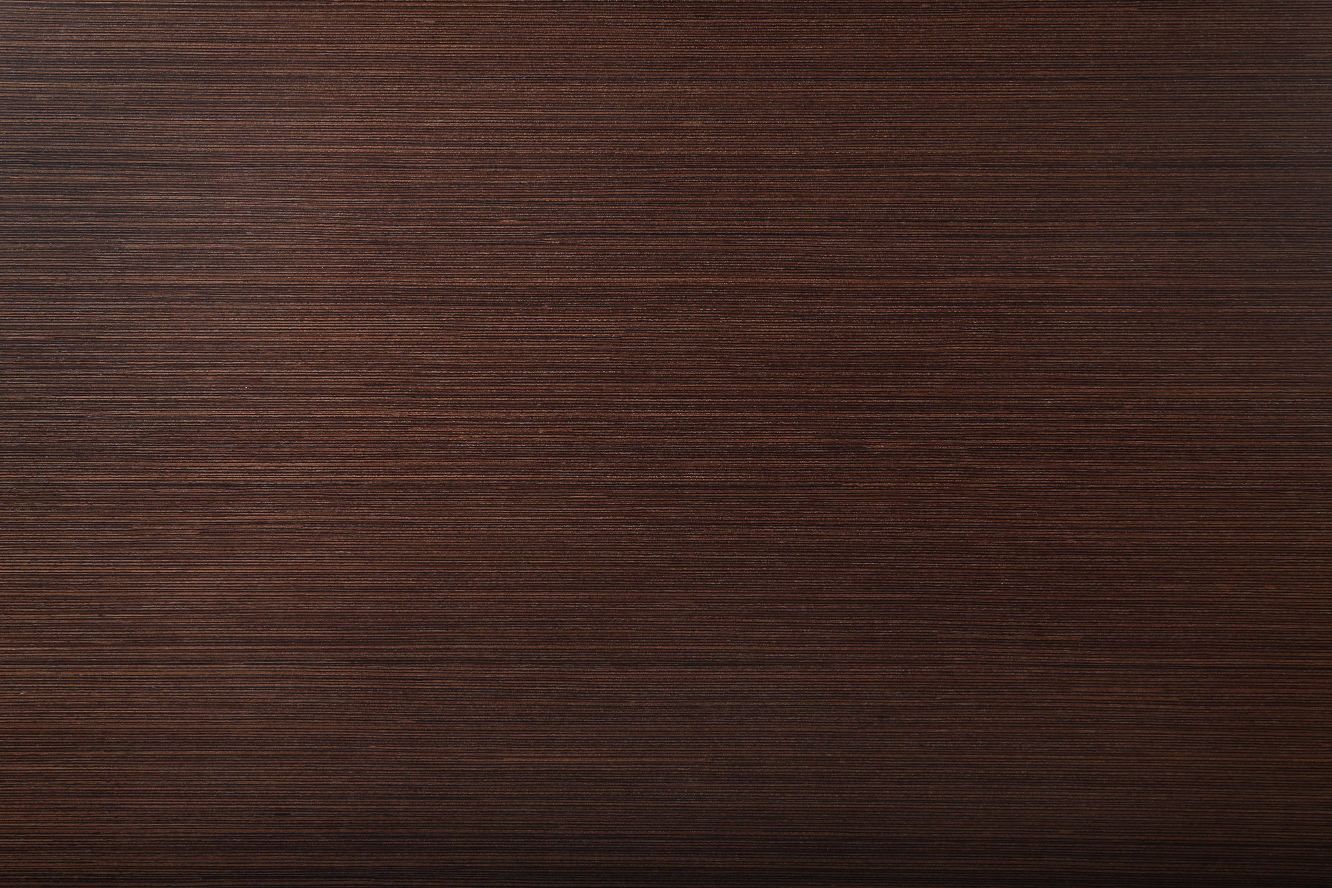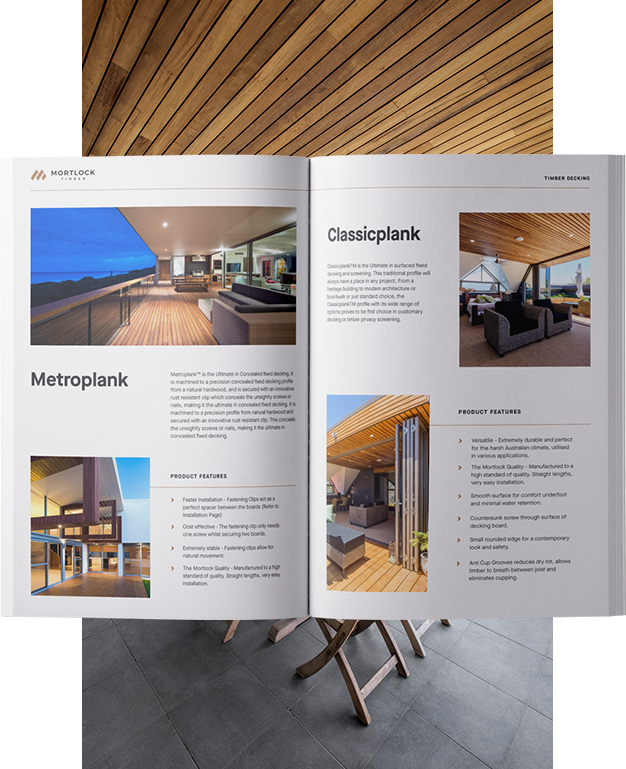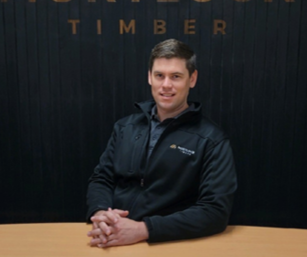Dressed vs. Rough Sawn Timber | Which one is right for you?

Architectural cladding is an essential aspect of any building’s design, and the choice of timber battens can significantly impact the aesthetics, durability, and sustainability of the cladding.
Indeed, choosing the wrong type of timber can have negative implications for your design and the durability of your project. Dressed and rough sawn timber are two common options for architectural cladding, and each has its own set of advantages and disadvantages.
In this blog, we take a look at both dressed vs rough sawn timber and discover their unique attributes and applicability in timber cladding projects.
What are dressed and rough sawn timber?
Dressed and rough sawn timber are both types of timber that are used in a wide range of architectural applications – from cladding to interior panelling and feature walls.
Dressed timber is wood that has been planed and sanded to create a smooth and uniform surface. Rough sawn timber is wood that has been cut from a log, but not yet planed or surfaced, leaving it with a more imperfect and rough texture.
Applications of dressed and rough sawn timber
Rough sawn lumber is ideal for more rustic designs and is highly sought after for its natural look and feel. For projects that are aiming to bring the natural textures of the timber to life, rough sawn wood is a good solution.
Dressed timber, on the other hand, is more suited to modern, clean finishes that highlight the contemporary polished attributes of wood. Both timber types are useful in highlighting different aspects of timber as a building material.
Pros of dressed timber for architectural cladding
- Smooth surface – dressed timber is known for its smooth and polished surface, which gives it a refined appearance that is well-suited for modern architectural designs.
- Consistent dimensions – dressed timber is usually more uniform in its dimensions, making it easier to work with and install. Its consistency also helps to create a more uniform appearance across the cladding surface.
- Fewer splinters – dressed timber has already been planed and sanded. This reduces the likelihood of splintering and makes it more comfortable to handle and work with during installation.
- Pre-finishing possible – unlike freshly sawn timber, dressed timber can be pre-finished with a range of coatings and treatments, making it more durable and resistant to weathering and pests. In Australia, this is highly important, particularly if you’re building in a rural or semi-rural area.
Cons of dressed timber for architectural cladding
- More labour-intensive – dressed wood takes more resources and time to produce due to the additional processing required to achieve a smooth finish.
- Artificial look – some architects and designers prefer the natural, rustic look of rough sawn timber battens, which can be lost with dressed timber after it has been processed to remove any imperfections.
Pros of rough sawn timber for architectural cladding
- Natural look – rough sawn lumber has a more natural and rustic look that can be ideal for certain designs and aesthetics. Many modern designs now feature rough timber cladding as the centrepiece – drawing from its imperfections and celebrating the diversity of timber as a raw material.
- More breathability – due to its rough and unfinished surfaces, rough sawn wood can provide better ventilation and air circulation, which can help prevent moisture buildup and rot. This is also important for the sustainability of the timber as it moves and ages over time.
Cons of rough sawn timber for architectural cladding
- Uneven surfaces – freshly sawn timber has a rough surface that can make it more difficult to install. This type of timber also makes it more difficult to create a smooth and uniform surface – something that most timber cladding projects rely on.
- Splintering – due to its freshly sawn surface, rough sawn timber is more prone to splintering, which can make it more difficult to work with during installation. Working with a professional is essential to ensure that injury is avoided.
- Limited finishes – if you want to apply a finish to rough sawn timber, you may be faced with a challenge due to its uneven and often furry or splintery surface. This can limit the types of finish that can be used on raw sawn timber products.
Dressed vs rough sawn timber environmental impact
The environmental impact of rough sawn timber and dressed lumber can vary depending on several factors, including the sourcing and production methods used.
Rough sawn timber boards typically require less processing than dressed timber, which can result in a lower carbon footprint and energy consumption during the production phase.
However, it’s important to note that the environmental impact of different timber types mainly depends on the practices used in forestry management and processing.
To ensure a minimal environmental impact, it’s important to source timber from sustainably managed forests. At Mortlock Timber, we consider it our responsibility to source timber from sustainably managed forests.
Buy high-quality dressed and rough sawn timber from Mortlock Timber
Whether you’re designing, building or upgrading, sourcing the right timber matters. At Mortlock Timber, we supply only the highest quality Australian-made timber products – ready to use on your new project.
Contact our team today to see how we can support your next steps.
View our pricing and product guide

We are committed to bringing you timber products that add value and endure for years to come, even in heavy traffic and harsh weather conditions. We understand the value of efficiency when it comes to installation and keeping hardwood timber costs down. That’s why we’ve spent decades perfecting our designs to make them easier to handle, less wasteful and more efficient to install. This efficiency allows us to offer you premier products that are more cost-effective so that you can experience greater savings on timber wall costs, timber ceiling costs, timber cladding costs and timber decking costs.
Download our Pricing and Product Guide for our complete hardwood timber price list including timber decking prices, timber wall prices, timber ceiling prices and timber cladding prices.
